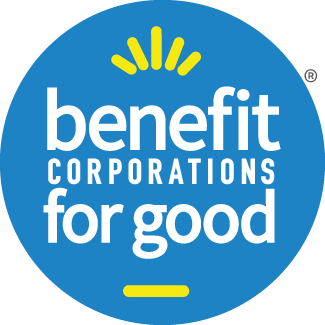How a Strategic Financial Services Firm Found Its Purpose Far Beyond the Bottom Line
As the founder and CEO of Tailwind PDX, Colleen Ruhlin brings a Fortune 100 financial and accounting skill set to her clients. Her strategic thinking and ability to see beyond a company’s financial statistics can do much to improve the performance of a business.
But when she made the decision to become an Oregon Benefit Company, she knew it wasn’t solely about the numbers. It was based on the practice of a Triple Bottom Line of People, Planet and Profit where a business focuses on its employees, its clients, and its communities in addition to making a profit.
We recently interviewed Colleen about becoming a certified Oregon Benefit Company. Here’s what she had to say about it, her motivation for doing it, and why it was right for her business.
1. What motivated you to become a Benefit Company?
I was fresh out of the corporate world when I met Mary Anne Harmer at the Oregon Small Business Fair. Her message about business being a force for good resonated deeply with me. I sort of filed it away for future reference. Later, when I worked with attorney Michael Jonas (of Rational Unicorn Legal Services LLC) on my business formation and saw that he was a certified Benefit Company – well, the light bulb came on. I had found my people!
2. Was it difficult getting internal support for moving toward this model?
No…I talked it over with myself, and I agreed. (I’m a single member LLC 😉)
3. How long did it take you to officially become a Benefit Company?
It took about a month from application to certification.
4. Have you seen any change in culture since you became a Benefit Company?
I’ve been an Oregon Benefit Company since business formation, so this was really baked into culture from the start. What I appreciate is the accountability – so that my commitment to the Triple Bottom Line stays front and center as I’m making day-to-day business decisions.
5. Have you experienced any positive outcomes since becoming a Benefit Company?
I find I’m attracting prospective clients who are also focused on the Triple Bottom Line of People, Planet and Profit. I love that we’re reinforcing one another’s values – it really feels like a virtuous cycle.
6. Would you recommend this business model to others? Why or why not?
Absolutely, yes. As an accountant, I’d say there’s no downside, only upside. This is not about demonizing profit. It’s about being attentive, innovative, and making fully informed decisions … really, it’s combining people, planet, and profit thinking.
7. What is the most important trait to have as a conscientious leader of a Benefit Company?
I think it’s humility. The more I learn, the more I appreciate how much I don’t know – so being willing to set ego aside, listen to different viewpoints, and see where my thinking was flawed or incomplete.
8. What lessons have you learned in the process?
I’ve gained an understanding of where I’m naturally strong, and where I can focus to continually improve as a conscientious leader.
9. Is being a Benefit Company part of your current brand message?
Yes! Being a Benefit Company helped me put into words something I would have otherwise struggled to articulate. It’s really helped paint a fuller picture of who I am and what my company is all about.
10. What is the single best reason you'd give for another company or peer to become a Benefit Company?
This really is the way of the future. Increasingly, consumers are looking for a broader sense of purpose and meaning from those with whom they do business. It’s pretty awesome to do this along with a group of like-minded fellow travelers.
You can learn more about Tailwind PDX here.
If you want to know more about why your business should become a benefit corporation, watch this.
—>Learn more about the 6 simple steps to becoming a certified Oregon Benefit Company or benefit corporation.
~benefitcorporationsforgood.com~

